Munich is a captivating city where history intertwines with modern charm, creating a unique atmosphere that enchants visitors. Nestled in the heart of Bavaria, this vibrant destination is renowned for its stunning architecture, world-class museums, and the inviting allure of traditional beer gardens. As you stroll through its picturesque streets, you’ll encounter a blend of historical landmarks and contemporary attractions that showcase the city’s dynamic spirit.
The rich culture of Munich is palpable in its bustling neighborhoods, each offering a distinct experience. From the lively squares filled with street performers to the serene parks perfect for relaxation, there’s something for everyone.
Whether you’re captivated by the grandeur of its historical sites or the excitement of local festivals, Munich promises an unforgettable adventure. If you’re planning your first visit, this comprehensive 3-day itinerary will guide you through the city’s must-see highlights, ensuring you make the most of your time in this remarkable Bavarian capital.

Begin your Munich itinerary and city adventure with a visit to the Old Town, where history comes alive. Start at Marienplatz, the city’s central square and the heart of Munich’s city centre for nearly a thousend years. Here, you can admire the stunning New Town Hall (Neues Rathaus) with its impressive Gothic architecture and catch the famous Glockenspiel performance, which features life-size figurines re-enacting scenes from Munich’s history. Just a short walk away, you’ll find the iconic Frauenkirche (Cathedral of Our Dear Lady) with its distinctive twin towers. The Frauenkirche is Munich’s oldest and best-known symbol.
As you explore, be sure to visit the Old Town Hall (Altes Rathaus), which dates back to the 15th century and offers insight into Munich’s medieval past. Don’t miss the charming streets surrounding Marienplatz, filled with shops, cafés, and historic buildings that tell the story of the city.

For those seeking a deeper connection to Munich’s past, consider joining a guided tour of the New Town Hall, available on Fridays, Saturdays, and Sundays. This tour provides unique insights into the history and architecture of this magnificent building, allowing you to uncover hidden stories that enrich your understanding of the city. The combination of exploring Marienplatz and participating in a guided tour makes for an enriching morning that sets the tone for your visit.

After soaking in the sights of Marienplatz, make your way to Viktualienmarkt, a bustling open-air food market located just south of Marienplatz. This vibrant market features over 140 vendors selling fresh produce, local delicacies, and artisanal goods.
It’s an ideal spot to grab a bite—perhaps try some traditional Weißwurst (white sausage) or sample regional cheeses and meats. But be warned: anyone who orders the famous white sausages after 12 noon may be disappointed. Traditionally, the Weißwurst is only consumed in the morning – and is only served in the morning.
The lively atmosphere and colourful stalls of the Viktualienmarkt make it a perfect place to enjoy a light lunch while experiencing local Bavarian culture. Also, the Viktualienmarkt is adorned with several charming water fountains, each featuring statues of notable Munich personalities, such as the folk singers Karl Valentin and Weiß Ferdl, adding a delightful touch to the market’s vibrant atmosphere. This is drinking water, meant to provide fresh water not only for the stand but for the Munich people. If you carry a water bottle with you, you can refill it here!
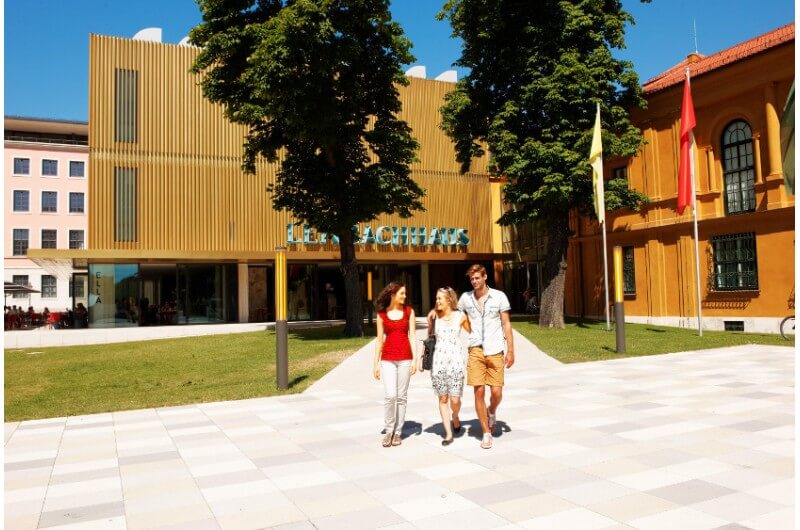
In the afternoon, head to Kunstareal, Munich’s renowned museum quarter located nearby. This cultural hub is home to several important museums, including the Alte Pinakothek, which showcases masterpieces from the Old Masters, and the Pinakothek der Moderne, which houses modern art collections. Additionally, you can explore such renowned and exciting museums like:
Städtische Galerie im Lenbachhaus: This museum is housed in a historic villa and features an extensive collection of works by the artists of the Blauer Reiter movement, including pieces by Wassily Kandinsky and Franz Marc. The gallery also hosts contemporary exhibitions.
Glyptothek: Dedicated to ancient sculpture, this museum displays an impressive collection of Greek and Roman sculptures from antiquity. The building itself is a beautiful neoclassical structure that enhances the experience of viewing these timeless works.
Staatliches Museum Ägyptischer Kunst: This museum focuses on ancient Egyptian art and culture. Its collection includes mummies, sarcophagi, and artefacts that provide insight into one of history’s most fascinating civilisations.
Spend your afternoon wandering through these artistic treasures, appreciating their architectural beauty and the diverse range of exhibitions on offer. Kunstareal is not only a feast for art lovers but also an architectural delight, featuring stunning historical buildings alongside contemporary designs. Be sure to take your time exploring this vibrant area that embodies Munich’s rich cultural heritage.
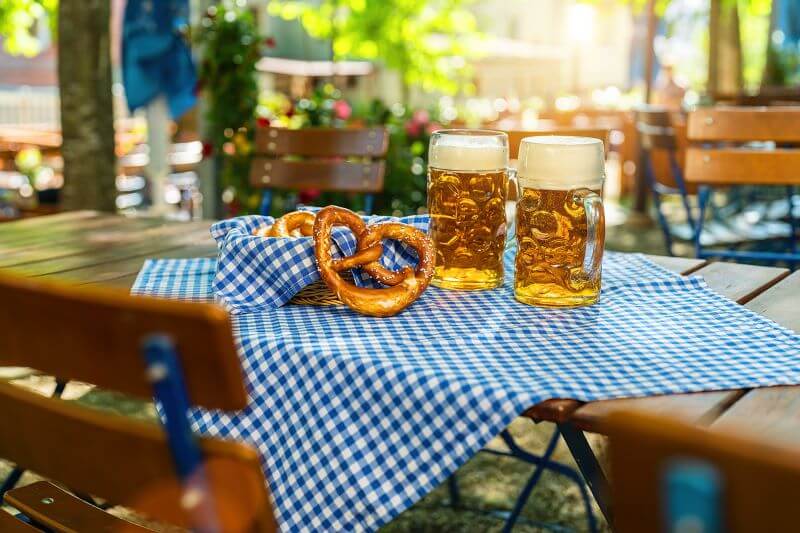
Wrap up your first day in Schwabing, a lively district brimming with charm and character. Known for its artistic flair, trendy boutiques, and vibrant nightlife, Schwabing offers an array of dining options. Enjoy a hearty Bavarian dinner paired with a refreshing local beer at a traditional beer garden like the Chinese Tower Beer Garden. The warm and welcoming atmosphere will make you feel like a local, providing the perfect setting to reflect on your first day in this enchanting city.

Start your second day by immersing yourself in the wonders of science and technology at the Deutsches Museum. Located on an island in the Isar River, this museum offers a vast array of fascinating exhibits covering topics from astronomy to transportation.
The Deutsches Museum offers an incredible array of exhibits that span the realms of science and technology, making it a must-visit destination for curious minds of all ages. As the largest museum of its kind in the world, it houses over 100,000 objects, showcasing everything from aerospace and marine navigation to chemistry and electricity. Visitors can marvel at historic artefacts such as the first motorised aircraft built by the Wright brothers, the original diesel engine designed by Rudolf Diesel, and even the laboratory bench where the atom was first split.

Interactive displays invite guests to engage with science through hands-on experiences like glass-blowing demonstrations and electricity experiments that produce real lightning. The museum’s diverse sections include fascinating topics such as mining, music, transportation, and astronomy, with highlights like Europe’s largest astronomy exhibit featuring a planetarium. Additionally, the Kinderreich area is specifically designed for younger visitors, offering a plethora of activities that encourage exploration and learning through play. With its extensive collection and engaging presentations, the Deutsches Museum promises an enlightening experience that captivates both children and adults alike.
As you explore, you’ll encounter interactive displays that engage visitors of all ages, making it a perfect destination for families. The museum’s extensive collection offers hours of exploration and is sure to inspire curiosity about the world around us.

In the afternoon, make your way to Werksviertel, a vibrant district that has transformed from an industrial area into a creative hub. Here, you’ll find the Umadum Ferris Wheel, which is not only Germany’s largest mobile Ferris wheel but also holds a Guinness World Record for its size. Standing at 78 metres tall, it offers breathtaking panoramic views of Munich and, on clear days, even glimpses of the majestic Alps. Each ride lasts about 30 minutes and provides a unique perspective on the city’s skyline.
After enjoying the stunning views from the Ferris wheel, take some time to explore Werksviertel itself. This area is known for its eclectic mix of shops, cafés, and cultural venues housed in repurposed industrial buildings. You can enjoy local delicacies at one of the many eateries or simply soak in the lively atmosphere that characterises this trendy neighbourhood.
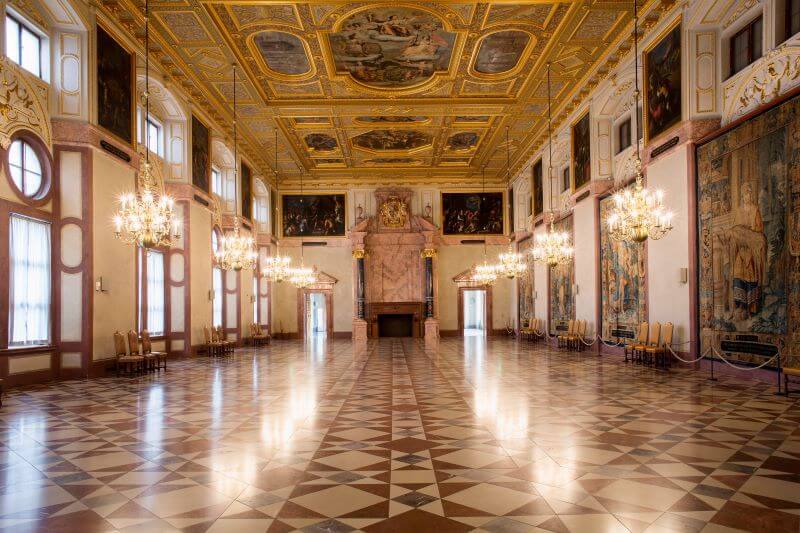
Start your final day with a visit to the Munich Residenz, the largest city palace in Germany and a stunning example of Bavarian architecture. As you explore the lavish interiors, you’ll be captivated by the opulent rooms, intricate decorations, and impressive collections that showcase the history of the Bavarian dukes. Don’t miss highlights such as the Crown Jewels and the beautifully decorated Antiquarium. Munich’s Residenz served as the seat of government for the Bavarian rulers from 1508 to 1918.
Adjacent to the Residenz is the Hofgarten, a tranquil garden that offers a peaceful retreat from the bustling city. Originally designed in the early 17th century in the Italian Renaissance style, this garden features beautiful flower beds, fountains, and pathways lined with trees. At its centre stands the Diana Temple, where you might catch live classical music performances or tango dancers during warm summer evenings. Take some time to relax on one of the benches, enjoying the serene atmosphere and stunning views of the surrounding historic buildings.

If you’re looking for an alternative morning programme, consider visiting Nymphenburg Palace (Schloss Nymphenburg), a magnificent Baroque residence located slightly outside the city centre. Originally built in the 17th century to celebrate the birth of Max Emanuel, the son of Bavarian Elector Ferdinand Maria, this stunning palace showcases the opulence of Bavarian royal life and was the summer residence of the Bavrian Kings. The grand architecture, designed by Italian architect Agostino Barelli, features an impressive central pavilion flanked by beautiful wings and adorned with intricate rococo and neoclassical elements added over the years.
The palace is not just about its interiors; it is also surrounded by expansive gardens that rank among the finest examples of garden design in Germany. The Nymphenburg Park features a harmonious blend of formal garden elements and an English-style landscape park, complete with serene lakes, winding paths, and five smaller castles and palaces such as the Pagodenburg and Badenburg.
In addition to the stunning architecture and gardens, Nymphenburg Palace houses several museums worth exploring. The Marstallmuseum showcases an impressive collection of royal carriages and sleighs from the 18th century, while the Museum of Nymphenburg Porcelain highlights exquisite porcelain pieces crafted in the palace’s own factory. Visiting Nymphenburg Palace offers a unique insight into the lives of Bavarian royalty and provides a beautiful setting for a leisurely stroll through history. With its rich heritage, stunning gardens, and captivating museums, Nymphenburg is a destination that beautifully encapsulates Bavaria’s regal past.

After your morning of royal exploration, head to the Englischer Garten (English Garden), one of Europe’s largest urban parks. Spanning over 375 hectares, this expansive green space is perfect for a leisurely afternoon stroll or a delightful picnic. As you wander along its picturesque pathways, you’ll encounter serene ponds, lush lawns, and even a few surprises like surfers riding the Eisbachwelle (Eisbach wave), a unique urban surfing spot that attracts thrill-seekers year-round. The Eisbach Wave is renowned for being one of the best standing waves in the world, and watching skilled surfers tackle it is a thrilling experience.
The English Garden is also home to several traditional beer gardens, including the well-known Chinese Tower Beer Garden (Chinesischer Turm), where you can stop for lunch or a refreshing local beer. This famous beer garden is one of the largest in Munich, with around 7,000 seats, making it a popular gathering spot for locals and tourists alike. Here, you can enjoy traditional Bavarian fare such as Hendl (roasted chicken), Schweinshaxe (pork knuckle), and Obatzda (a cheese spread), all while soaking in the lively atmosphere often accompanied by live brass band music. Good to know: In areas where tablecloths – and possibly salt and pepper pots – are laid out, there is table service. In areas where only tables are set up, but no further facilities, you are welcome to bring your own food and drinks. So you have both options: you can either order here or bring a picnic.

As you explore further into the park, you’ll discover charming features such as the Monopteros, a small Greek temple that offers stunning views of the surrounding area and is a perfect spot for taking memorable photos. The park’s design encourages relaxation and recreation, with plenty of open spaces for sunbathing or playing frisbee, as well as shaded areas under mature trees where you can unwind with a good book.
Another highlight of the Englischer Garten is the tranquil Kleinhesseloher See, a picturesque lake at the heart of the park. Here, you can rent paddle boats or simply enjoy the serene surroundings while watching ducks glide across the water. The lake is also home to a lovely beer garden called Seehaus, where you can indulge in refreshments while taking in beautiful views of the water.
Whether you’re enjoying a leisurely walk through its scenic paths or relaxing at one of its many beer gardens, the Englischer Garten offers an idyllic escape from the city’s hustle and bustle. With its blend of natural beauty, cultural charm, and lively social scene, this expansive park is an essential part of your Munich experience.

If the weather turns rainy and outdoor plans to visit the Englischer Garten are thwarted, Munich offers a wealth of intriguing indoor alternatives, particularly through its lesser-known museums or modern installations which are a lot of fun. These hidden gems provide diverse experiences that cater to various interests, ensuring that your day remains engaging and enjoyable despite the gloomy weather.
One such museum is the Museum für Abgüsse Klassischer Bildwerke, which showcases an impressive collection of plaster casts of ancient sculptures. Located near Königsplatz, this museum allows visitors to wander among replicas of Greek and Roman masterpieces, offering a unique opportunity to appreciate the artistry of ancient civilisations. The casts are not only historically significant but also serve as excellent study aids for those interested in art and sculpture, making it a perfect spot for artists and students alike. Admission is free, allowing you to explore without any financial commitment.

Another fascinating option is the Sudetendeutsches Museum, which delves into the history and culture of the German-speaking population in the Bohemian lands. Spanning over 1,100 years of history, this museum features exhibitions that highlight the art, culture, and struggles of the Sudeten Germans. With five levels of displays, visitors can immerse themselves in this rich narrative while enjoying stunning views of Munich from the top floor. The museum is also barrier-free, making it accessible to all.

Another exciting indoor venue is Magic Bavaria, Munich’s first Upside-Down experience museum. This interactive attraction invites visitors to explore a whimsical world filled with illusions and creative installations that challenge perception. Each room presents unique themes inspired by Bavarian culture, allowing guests to engage with their surroundings in playful ways—such as walking on ceilings or posing in fantastical settings perfect for social media photography. With over 30 installations designed to surprise and delight all ages, Magic Bavaria promises fun for families and friends alike.
If you have a penchant for crystals and minerals, don’t miss the Museum Mineralogia, also known as the Reich der Kristalle. This museum may appear unassuming from the outside but dazzles visitors with its extensive collection of crystals, meteorites, and even moon rocks inside. It’s an excellent destination for those fascinated by geology or simply looking to marvel at nature’s beauty in its crystalline forms.
With such a diverse array of museums available in Munich, you can easily fill your rainy day with exploration and discovery while remaining comfortably indoors. Each venue offers unique insights into different aspects of culture and history, ensuring that your time in Munich remains both educational and enjoyable regardless of the weather outside.
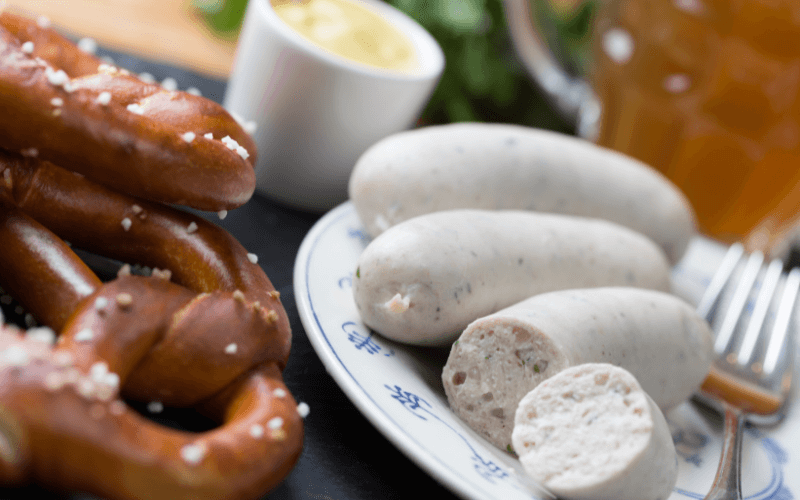
On your first day in Munich, immerse yourself in rich culinary traditions. Start your morning with a typical Bavarian breakfast at a local café featuring classic Weißwurst (white sausage) served with sweet mustard alongside freshly baked Bretzel—a beloved staple found throughout Southern Germany.
For lunch at Viktualienmarkt, sample local delicacies like Obatzda, paired with fresh bread or pretzels. In the evening experience traditional beer garden culture at places like Hirschgarten, where hearty dishes such as crispy-skinned Schweinshaxe (pork knuckle) await alongside refreshing local beers.
Of course, Munich has a variety of beer gardens and beer halls, including the famed Hofbräuhaus and Augustiner Bräustuben. Especially the famous beer-hall Hofbräuhaus is a must-visit for experiencing Bavarian culture. The menu at Hofbräuhaus features traditional Bavarian cuisine, also including roast pork knuckle and schnitzel.

On day two explore diverse culinary offerings beyond traditional roots starting with breakfast at trendy cafés like Man Versus Machine, known for exceptional coffee. After museum visits indulge in lunch at upscale delicatessen Dallmayr, sampling gourmet dishes or seasonal specialities.
Dinner could be enjoyed at modern restaurants in Schwabing such as Café Luitpold, followed by dessert featuring delightful treats like rich chocolate cake layered with cherries known as Schwarzwälder Kirschtorte (Black Forest cake).

On your final day begin with breakfast at quaint spots like Kaffeeküche, enjoying freshly brewed coffee alongside homemade pastries before visiting Nymphenburg Palace for lunch nearby at historic brewery Augustiner Bräu—savouring traditional dishes while sipping on their renowned beer.
Conclude your culinary journey with farewell dinner options ranging from fine dining experiences at places like Restaurant Dallmayr or Michelin-starred Tantris offering innovative takes on Bavarian cuisine—a perfect ending note!

If you’re looking to venture beyond Munich for a day, there are numerous exciting day-trip options that cater to a variety of interests. Here are some of the most popular destinations that offer a delightful escape from the city.
A visit to Neuschwanstein Castle is essential for anyone travelling to Bavaria and it is a popular destination for a day-trip from Munich. This iconic castle, nestled in the picturesque Bavarian Alps, inspired Disney’s Sleeping Beauty Castle and is renowned for its stunning architecture and breathtaking views. Commissioned by King Ludwig II, the castle features opulent interiors that reflect his artistic vision, combining elements of Romanesque, Gothic, and Byzantine styles.
Although construction began in 1868, the castle was never fully completed, yet it stands as a testament to Ludwig’s romantic ideals and fascination with medieval culture. Easily reachable via guided tours or train connections from Füssen, Neuschwanstein promises a magical experience steeped in history and romance. Visitors can explore the castle’s lavish rooms and enjoy panoramic views of the surrounding landscape, making it a highlight of any trip to Bavaria.
Tip: The also stunning Hohenschwangau Castle is located near Neuschwanstein Castle and visiting both Neuschwanstein and Hohenschwangau castles is recommended for a full day trip.

Regensburg is celebrated for its well-preserved medieval architecture and rich history, making it a UNESCO World Heritage site since 2006. The city’s charming cobblestone streets are lined with impressive buildings that showcase its historical significance, including the magnificent Regensburg Cathedral, which exemplifies French Gothic architecture. The Stone Bridge, dating back to the 12th century, has been in continuous use for over 800 years and serves as a vital link between the two sides of the city.
Wandering through the picturesque old town, visitors will discover quaint shops and delightful cafés nestled among historic structures, creating an ideal spot to appreciate both culture and history. Regensburg’s vibrant atmosphere is enhanced by its many festivals and events throughout the year, allowing guests to immerse themselves in local traditions. With its blend of architectural beauty and cultural richness, Regensburg offers a captivating glimpse into Bavaria’s past.

Nuremberg is famous for its medieval old town, which invites exploration through its narrow streets filled with history. The imposing Nuremberg Castle dominates the skyline and offers panoramic views of the city, providing insight into its strategic importance throughout history. Visitors can delve into the city’s role during World War II by visiting the Documentation Centre Nazi Party Rally Grounds, which presents a comprehensive overview of this significant period.
The centre features exhibitions that educate visitors about the rise of the Nazi regime and its impact on Germany and beyond. Nuremberg’s vibrant atmosphere is further enriched by its many markets and festivals, including the famous Christmas market that draws visitors from around the world. With its fascinating blend of historical significance and cultural vibrancy, Nuremberg is an essential all-year destination for anyone interested in exploring Germany’s past.

Just an hour from Munich lies Lake Tegernsee, offering a serene escape into nature surrounded by majestic mountains. This beautiful lake is perfect for outdoor activities such as hiking, cycling, or simply relaxing by the water’s edge while enjoying stunning views of the Alps. Visitors can explore picturesque villages along the shore or take advantage of various water sports available on the lake itself.
Boat trips provide a unique perspective on this idyllic setting while allowing you to soak in the tranquil atmosphere. The area is also known for its charming cafés and restaurants serving delicious local cuisine, making it an ideal destination for food lovers seeking authentic Bavarian flavours. With its breathtaking scenery and peaceful ambiance, Lake Tegernsee is a perfect retreat for those looking to unwind in nature.

Often referred to as the “Bavarian Sea,” Chiemsee offers a unique experience with its expansive waters and stunning landscapes. Visitors can take boat trips to explore two main islands—Herreninsel and Fraueninsel—each offering distinct attractions. Herreninsel is home to Herrenchiemsee Palace, built by King Ludwig II as a tribute to Versailles; it features lavish gardens and opulent rooms that reflect Ludwig’s extravagant tastes.
On Fraueninsel, you’ll find a charming Benedictine nunnery where you can enjoy peaceful walks among beautiful surroundings. The lake itself provides ample opportunities for swimming, cycling along scenic paths, or simply relaxing on sandy beaches while taking in breathtaking views of the surrounding mountains. With its combination of natural beauty and cultural heritage, Chiemsee is an ideal destination for relaxation and exploration.

For stunning alpine scenery, head to Garmisch-Partenkirchen, where you can explore beautiful hiking trails that cater to all skill levels. This picturesque town is nestled at the foot of Germany’s highest peak, Zugspitze, which offers breathtaking views from its summit accessible via cable car or cogwheel train. Zugspitze is the highest mountain in Germany and a popular day trip option. On clear days, visitors can see as far as Austria from this vantage point, making it well worth the trip.
In addition to hiking during warmer months, Garmisch-Partenkirchen transforms into a winter wonderland perfect for skiing or snowboarding when snow blankets the mountains. The charming town itself features traditional Bavarian architecture with inviting shops and restaurants serving hearty local dishes after a day outdoors. Whether you’re seeking adventure or relaxation amidst spectacular landscapes, Garmisch-Partenkirchen promises an unforgettable alpine experience.

Allow us to recommend something completely different. For those interested in history, a visit to the Dachau Concentration Camp Memorial Site is both educational and poignant and it is a significant historival site near Munich. Dachau is easily accessible by public transport from Munich, but you can also visit with a guided tour.
Established as the first Nazi concentration camp in 1933, Dachau serves as a memorial to the victims of the Holocaust and provides a sobering insight into this dark chapter of history. The site features exhibitions detailing the experiences of prisoners and the atrocities committed within its walls, allowing visitors to reflect on the harsh realities faced by those who suffered there.
Guided tours offer valuable insights into the camp’s significance and serve as a reminder of the importance of remembrance in preventing future atrocities. The memorial site also includes a museum that houses photographs, documents, and personal stories that further illustrate the impact of this tragic period on individuals and families. Visiting Dachau is a powerful experience that encourages reflection on human rights and dignity. (Please note: The visit is not suitable for young children and is recommended for children aged 13 and over.)

Summer is an ideal time to visit Munich, offering warm, sunny days that are perfect for outdoor exploration and enjoying the city’s vibrant atmosphere. During this season, you can partake in various festivals and events, including the famous Open Air Cinema and numerous street fairs.
For a quieter experience, the shoulder seasons of spring and early autumn provide mild weather and fewer crowds, allowing you to appreciate the city’s sights at a more leisurely pace. If Oktoberfest isn’t on your list, consider avoiding this period to skip the hustle and bustle, as well as the higher accommodation prices that come with this world-renowned festival. Late autumn can also be a lovely time to visit, particularly if you enjoy festive Christmas markets.

Choosing accommodations in the city centre, particularly near Marienplatz, ensures easy access to major attractions such as the New Town Hall and Viktualienmarkt. This central location allows you to explore on foot, making it convenient to enjoy the local culture.
Schwabing is another excellent option, known for its vibrant atmosphere, artistic flair, and unique character. This district is home to trendy cafés and boutiques that give you a taste of local life. Additionally, consider looking for hotels near Munich Central Station, which offers a balance of convenience and affordability while providing easy access to public transport for day trips outside the city.
And keep in mind that with the public transport, even the neighbourhoods a little farther from the centre might be a good choice because it can be easy to get to the centre or other locations by S- or U-Bahn (trams and metro).
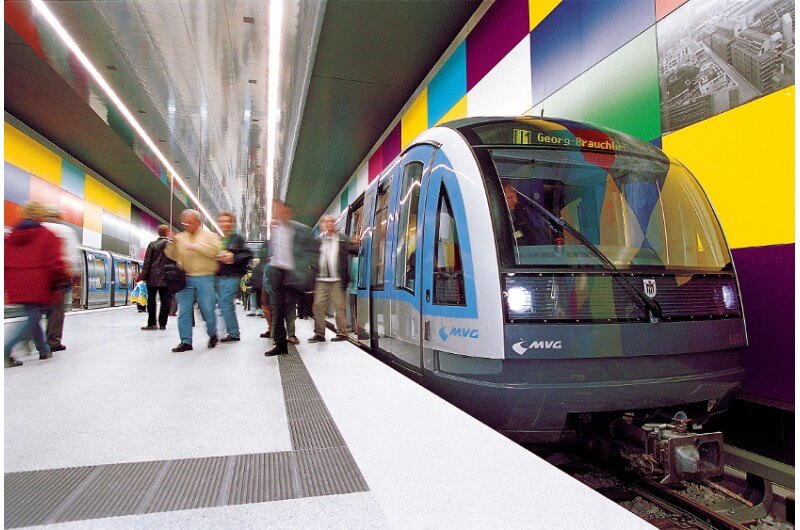
Munich boasts an efficient public transport system that includes buses, trams, and an underground network (U-Bahn). The U-Bahn is particularly useful for quickly travelling from one area to another, while the S-Bahn connects the city to surrounding towns. A Munich City Pass with public transport option offers free transport and discounts at key attractions, adding significant value to your visit.
It’s worth noting that many tourist attractions are within walking distance of each other in the city centre. This makes it easy to cover most distances on foot while enjoying the beautiful architecture and lively streets of Munich. For a more intimate look at the city and the history of the sights, consider joining a guided walking tour to uncover Munich’s rich history and hidden gems.
Alternatively, cycling is a popular way to explore; many locals use bicycles for their daily commute. You can easily rent a bike from various locations throughout the city for around €15 per day. And you can even join a guided tour by bike, and this might be a really good alternative for both getting around and getting to know the city.
If you go for the public transport option, don’t forget to download local transport apps like MVG Fahrinfo, which can help you navigate public transport efficiently while providing real-time updates on schedules.

With its captivating blend of history, culture, and natural beauty, Munich is the perfect destination for a 3-day getaway. With this Munich itinerary, we want to ensure you’ll experience the best the city has to offer, from historic landmarks to vibrant neighbourhoods.
To make your visit even easier and more relaxed, consider investing in the Munich City Pass. This convenient travel item grants you access to over 30 attractions throughout the city, allowing you to explore without worrying about individual ticket prices. For example, the ticket for Deutsches Museum, Umadum Ferris Wheel and Nymphenburg Palace are already included in the City Pass. As are a walking tour of the city centre or a guided tour of the New Town Hall. And many more!
If you choose to book the option, the Munich City Pass also includes unlimited public transport, so you can effortlessly navigate the city’s efficient transport system. Whether you’re hopping on a tram to visit the stunning Nymphenburg Palace or taking the U-Bahn to explore the Bavarian National Museum, this pass simplifies your travel experience. Additionally, it offers discounts at various attractions and restaurants, enhancing your overall experience while saving you money and giving you lots of things to explore during your days in Munich.
By using the Munich City Pass, you can focus on enjoying your time in this amazing city rather than stressing over logistics. With everything from guided tours to fast-track entry included, your adventure in Munich will be both enjoyable and hassle-free.
So pack your bags and let Munich’s charm win you over—your unforgettable journey awaits!